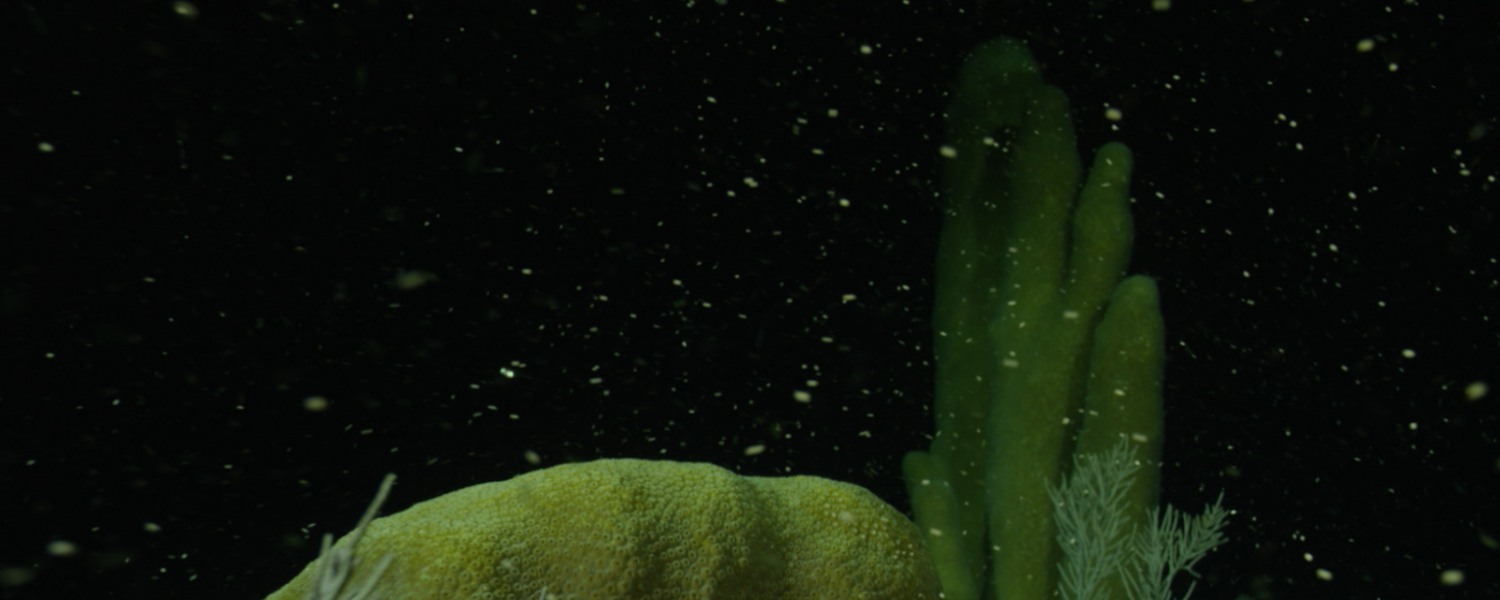
Coral Spawning
One of the most spectacular events to occur on a reef is the annual spawning of corals. This phenomenon only happens once a year in many species and its timing is tied to the lunar cycle, the tidal cycle, the photoperiod and seawater temperature. Spawning of the massive star corals (Orbicella spp.) on Roatan, like the one featured in this video, spawn a few days after the full moon in September around 9:30 at night.
Trillions of eggs and sperm are simultaneously released into the water in one of the most astounding acts of synchronicity in the natural world!
The sperm and egg merge and form a coral planula larva. The larvae are naturally attracted to the light.and swim to the surface of the ocean, where they remain for days or even weeks until they fall back to the reef and attach themselves to a hard surface. Once attached, the larvae metamorphasizes into a coral polyp and begin to grow and divide, making genetic copies of itself. As more and more polyps are added, a coral colony develops. Eventually, the coral colony becomes mature, begins reproducing, and the cycle of life continues.
Video Credit: Milbrand Cinema
